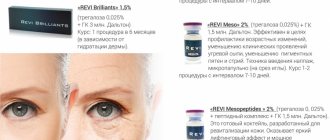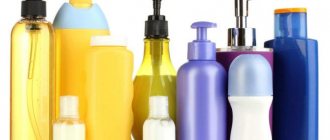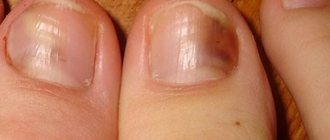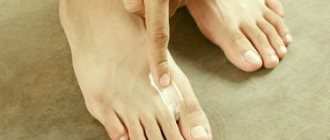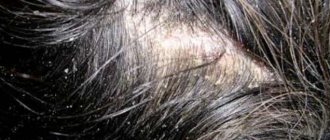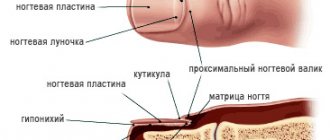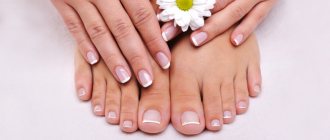Fungal nail infections are quite easy to get. If you have a fungal infection on your foot, it may gradually spread to one or more of your nails. This happens quite often in both children and adults. You can get a fungal nail infection in a warm, humid place, such as a pool or gym locker room. If someone else in your circle has a yeast infection and has been walking on the floor barefoot, all you have to do to get the infection is walk barefoot in the same area.
Wetting your nails for a long time can also lead to nail fungus. Some people suffer from yeast infections because they wear the same pair of sweaty or wet shoes every day. Nails that become damaged due to work or hobbies are also susceptible to fungus. What you see externally on infected nails depends on the type of fungal infection.
Treatment can prevent nail infections from developing. If you have diabetes or a weakened immune system, comprehensive treatment is especially important. Once a fungal nail infection develops in people with diabetes, there is an increased risk of developing trophic ulcers that do not heal. At the first sign of problems with your nails, it is important to consult a dermatologist (or mycologist - a specialist in fungus). A dermatologist can tell you whether you have a nail infection or something else.
Types of fungal infections
Fungal infections can appear at any age. Infants most often encounter this problem - redness and peeling appear. The symptoms are similar to those of an allergic reaction, so therapy is often carried out, which is ineffective.
The clinical picture depends on the type of disease:
- Because Candida thrives in moist and warm environments, it multiplies in the diaper area of babies. This manifests as intense, large-scale redness with scaly edges.
- Oral thrush is characterized by the appearance of a tight, gray-whitish film in the cheeks and throat. This type of disease is also caused by Candida and is most common among infants.
- Ringworm is accompanied by severe itching, the appearance of round bald spots and blackheads. There is excessive hair fragility, which results in bald spots.
- Vaginal (genital) candidiasis also occurs in childhood, although much less frequently. The victims may be babies in the first weeks of life, whose mother gave them Candida at birth. Babies still have their mother's female sex hormones (estrogens) in their bodies. They appear to inhibit the regenerative ability of the mucous membranes, which in turn contributes to the progression of the disease.
Pet-borne dermatophytes should not be underestimated. The head and torso are affected. The main carriers are cats, as well as guinea pigs and rabbits. Accompanied by severe itching, redness and excessive dryness.
Table - Classification of mycosis pathogens
| Pathogen name | Localization area | How it manifests itself |
| Tinea capitis or Microsporum (microsporia or “ringworm”) | Scalp | Ring-shaped, sharply limited red spots appear, in which the hair either breaks or falls out. Sometimes the scalp starts to ooze due to weeping. Small red pustules may appear. |
| Tinea corporis (dermatophytosis) | Torso and upper limbs | It appears as pale red areas with characteristic peeling. In addition, there is unbearable itching. Therefore, it is important to start treatment as soon as possible to avoid spreading the fungus to other parts of the child’s body through scratching. |
| Tinea pedis (onychomycosis) | Nail plates | The filamentous fungus damages the toes or nails and gives them a characteristic yellowish coloration. The plates with onychomycosis become thick and brittle, with a “loose” structure. With the exception of visual changes, symptoms such as itching do not appear, so onychomycosis is usually diagnosed in the later stages of progression. |
Salicylic ointment
Ingredients: The active ingredient is salicylic acid.
Indications: refers to non-steroidal external agents, relieves fungus from infected areas of the nail plate, has an antiseptic effect. The advantage of the drug is the absence of contraindications, but in advanced forms of the disease it is ineffective.
Application: the scheme for using salicylic ointment in the treatment of mycosis provides two options - lubricating the affected nail (area) or a compress. With the second method of treatment, the bandage is applied at night, which will speed up recovery by 3-5 days, but the side effect (skin exfoliation) requires taking baths with a soap-soda solution to remove the exfoliated epidermis.
Cost: from 25 rubles.
Reasons for the development of mycosis
Predisposing factors include taking antibiotics, poor hygiene when visiting swimming pools, increased sweating and/or poor immune system protection. In most cases, pathological disorders in the body occur due to a combination of reasons.
Varieties of opportunistic microorganisms that are causative agents of the disease:
- yeast (Candida albicans causes thrush);
- dermatophytes (provokes herpes zoster);
- mold (causative agent of aspergillosis and respiratory tract problems).
The most common is Candida albicans - it is part of the natural microflora, present in 50% of the population. It does not cause problems until it begins to multiply uncontrollably under the influence of certain factors. Most often, Candida passes from mother to baby during childbirth and breastfeeding.
For pregnant
During pregnancy, the main rule of any treatment is not to harm the unborn child. During the treatment of fungus, this means choosing drugs exclusively for external use, focusing on their ability to be absorbed into the body.
Of the drugs listed above, the least dangerous for pregnant women are those based on imidazole derivatives. They act only in the thickness of the skin at the site of application, practically without entering the blood. For the same reason, pregnant women are not prescribed allylamines and drugs from other groups.
The final choice will depend on the exact diagnosis, the composition of the drug, its spectrum of action, additional properties and many other factors. The doctor will choose from a variety of drugs the most suitable drug in each case, taking into account minimizing the risks to the fetus.
Symptoms of fungal infections
The nature and severity of pathological changes depend on the virulence (pathogenicity) and type of pathogen, as well as on the reactivity of the body, the area of localization and the area of the lesion. Signs of the disease cannot be identified independently. When primary symptoms appear, it is recommended to consult a doctor rather than begin self-medication.
The main symptoms of fungus in children:
- Body and scalp. Accompanied by redness, peeling and baldness (hair is broken off at a height of 4-5 mm), as well as the appearance of grayish-white scales.
- Feet, hands and interdigital space. Toenail fungus in children is characterized by excessive dryness, redness, moderate weeping and peeling. There are also bubbles and cracks that itch unbearably.
- Mucous membranes of the oral cavity and genitals. Thrush or candidiasis is accompanied by the appearance of a white, cheesy coating. Extensive superficial ulcerations and vesicular rashes are accompanied by burning and itching.
None of the known fungal diseases develops lasting immunity, so repeated infections are not excluded. That is why parents should know what fungus looks like in children and consult a doctor when the first symptoms appear.
Exoderil
The drug Exoderil belongs to the group of allylamines. Its main medicinal substance is naftifine. The ointment has a destructive effect on the cell walls of the fungus and is aimed at quickly eliminating the disease.
The remedy also prevents the further development of various complications of the disease. According to reviews, the use of Exoderil in the treatment of early-stage nail fungus will allow you to cope with the disease in 1-2 weeks with regular application of the drug. It has no contraindications and does not cause side effects.
Diagnosis of mycosis
To make a diagnosis, an examination is carried out by a dermatologist or mycologist. The first step is a microscopic examination of the scales of the epidermis, hair and nails.
Laboratory testing allows you to determine the presence of spores or hyphae, which is necessary to clarify the type of pathogen and make an accurate diagnosis. The dermatologist also performs an examination under a Wood's lamp. This approach allows us to determine the type of disease and differentiate it from dermatitis.
How to prepare your feet for applying ointment?
To destroy the mycelium that has grown deep into the nails, it is necessary that the ointment for nail fungus is absorbed as best as possible. To do this, you need to treat your feet. This is done either with the help of a therapeutic pedicure from a specialist podiatrist, or with home remedies.
If you choose a pedicure, go to a specialist, not a regular pedicure salon. The specialist not only has a device with grinding attachments, but also means of protection and disinfection, wears a special mask or helmet, and professionally disinfects the office.
The home method looks like this:
- Make a hot soap-soda solution (5-10 grams of soap and soda per liter of water), soak your feet in it for 15-30 minutes;
- Apply salicylic ointment or special Arievich ointment to your feet, wrap them in cellophane or parchment paper and leave them there for 12-24 hours. Then scrape off the keratinized skin and affected nail plates, cut off the fragments that are lagging behind the bed;
- Dry your feet, wipe your nails dry, and only then apply the ointment.
If 1-2 nails are affected, it is enough to apply a special peel-off patch with urea or wrap it with a product containing a 40% solution of urea or lactic acid. Then the plate is scraped off or cut to healthy tissue.
Treatment of fungal infections
Thrush is treated with antifungal agents that are applied to the skin or mucous membranes. Systemic therapy is also prescribed. If you treat only the symptoms, a relapse will soon occur. The cause of the disease should be combated by strengthening the body’s protective functions.
Treatment is carried out on an outpatient basis. Hospitalization is necessary only in case of severe disease and in the presence of concomitant pathologies.
Treatment of fungal infections in children has the following approach:
- prescribing monotherapy or a combination of systemic and external antimycotic agents;
- the use of immunostimulants, glucocorticoids and antihistamines.
To increase the effectiveness of drug therapy, multivitamin complexes and physiotherapeutic procedures (DMV, therapy, darsonvalization, magnetic therapy, medicinal electrophoresis) are prescribed. Treatment should be carried out 2-3 times a day. The hair is shaved and the crusts are carefully removed.
When localized on the feet and hands, it is recommended to use special pastes, creams and ointments based on clotrimazole, neftifine or terbinafine. If a bacterial infection occurs, it becomes necessary to use antibiotics. For protracted and severe fungus of the nails, face and body skin, and hair in a child, antimycotic drugs containing fluconazole, itraconazole or griseofulvin are indicated.
For onychomycosis, it is necessary to use the drug until the nail grows completely. If drug treatment is ineffective, then surgical removal of the nail plates is performed.
To permanently defeat an infectious disease, you need to use the right medications and adhere to a certain diet. Self-medication in this case can lead to the development of serious complications.
Foods that should be excluded from the diet:
- Sugar, in any variety - honey, cane sugar, dextrose, fruit, malt and beet sugar, maple syrup, etc.
- Refined carbohydrates - white bread, buns, cakes or cookies, light noodles, white rice, etc.
- Products containing yeast.
When treating fungal infections in children, it is recommended to keep the affected area dry by frequently changing underwear or diapers. After showering and bathing, it is advisable to pat your skin well with a soft terry towel.
How to apply anti-fungal varnish correctly
One of the important features of the use of antimycotic agents is that the nail plate should be as clean as possible. To do this, fungal deposits are carefully removed using nail scissors. The nails themselves should be cut short, washed with laundry soap and treated with an alcohol solution.
The varnish is applied with a special brush included in the product kit on completely dry nails. Avoid contact with surrounding skin. In this case, it is imperative to follow the instructions. To enhance the effect of the varnish, it is advisable to wear light cotton socks during the entire course of treatment, changing them daily, and spacious shoes that do not squeeze your toes.
Question answer
Yes, they are great for preventative purposes. It is useful to use varnishes after treatment, this way you protect yourself from secondary infection. You can even paint your nails with regular polish on top.
Such varnishes cost a lot. For example, the price of ointments or various gels is much lower. This is perhaps the only negative.
It is worth consulting a doctor. But most varnishes are allowed during gestation. In this situation, when a fungus appears, doctors prescribe external remedies (ointments, creams and also varnishes).

